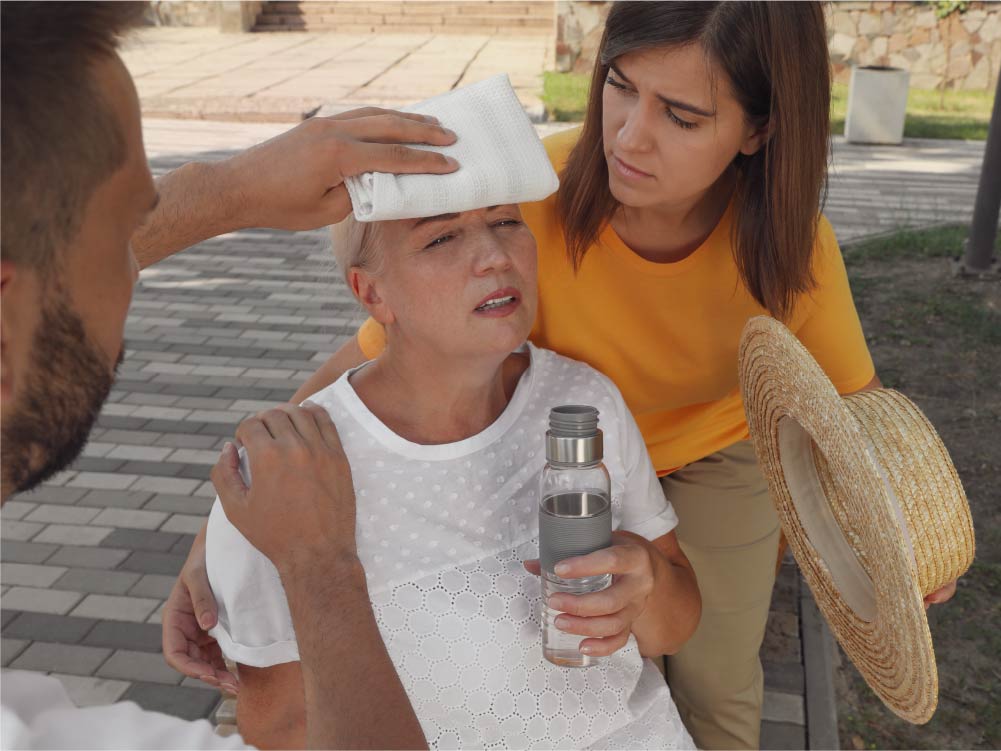Early Warning Systems and Communication with Citizens
The effectiveness of a local heat action plan depends heavily on communication. Information campaigns serve as a catalyst for municipal heat protection management, raising awareness among citizens about the impacts of climate change. Topics for such campaigns can include hydration habits, tips for keeping oneself and living spaces cool, and attention to vulnerable groups.
In addition to traditional information channels and press work, social media and specialized apps—such as the Klima-Taler app for cities—are particularly useful. The app allows municipalities to inform citizens about immediate measures from the local heat-health action plan via push notifications. These notifications have the advantage of reaching users even when the app is closed, appearing directly on the lock screen.
The Klima-Taler app can also be used to support municipal heat management by providing tips for hot days and a “climate treasure map,” where locations such as drinking fountains or cool public spaces can be marked.
Measures for the local heat action plan

A local heat-health action plan includes urban planning that creates shaded areas, sufficient green spaces, and public drinking water fountains. Such measures require time for planning, potential funding applications, and gradual implementation. However, in addition to a long-term local heat action plan, there are individual measures and guidelines that can be implemented immediately in any municipality.
Existing cool spaces, such as churches, libraries, and air-conditioned community halls, should be opened on hot days for all, and private businesses can be encouraged to participate in providing access to vulnerable populations.
Generous provision of water is essential; if drinking water stations are not yet widely available, mobile teams or municipal facilities can distribute water, and misting systems can be used at large events to provide cooling.
Training professional staff to recognize heat-related complaints is crucial. Employees in hospitals, nursing homes, senior residences, schools, and daycare centers should be integrated into the municipal heat action plan, enabling them through training and information to respond appropriately to heat hazards and implement preventive measures.
Raising public awareness of vulnerable groups. Neighborhood networks can be activated to check on at-risk individuals, providing help with shopping, walking pets, phone calls, or personal reminders for regular hydration and medication adjustments.
Adjustments to staffing plans and working hours should be considered during forecasted heatwaves. Emergency services and other critical sectors, such as power supply, may need increased staffing, while work in sectors like road construction or waste collection can be shifted to the cooler morning hours.
Local heat-health action plans are becoming increasingly important
The health impacts of heat are becoming increasingly noticeable in Germany. According to a study by the Federal Environment Agency (UBA) and the Robert Koch Institute (RKI), there were approximately 3,000 heat-related deaths in each of the summers of 2023 and 2024. The most affected were elderly people over 75 years old with pre-existing conditions.

Modeling indicates that heat-related mortality in German cities could increase significantly by 2100—by up to 50 % or more—if climate protection remains insufficient and no effective adaptation measures are implemented. In addition to the direct stress from high temperatures, emissions such as ozone substantially exacerbate health risks. During intense heat waves, ozone can contribute to up to 20 % of the additional mortality. The combination of high temperatures and poor air quality therefore represents a serious threat. Local heat action plans are a key instrument for effectively addressing this development at the local level.
Key points for local heat-health action plans
The local heat action plan is part of municipal heat management and primarily includes measures for climate adaptation. An effective local heat-health action plan focuses on immediately implementable actions to protect the population, especially vulnerable groups, and to ensure basic services during extreme heat. Such a plan becomes effective only through good communication and active involvement of citizens. The Klima-Taler app offers a wide range of possibilities for information, communication, and motivation.
Do you have questions? Get in touch!
We look forward to meeting you. Let’s explore together the possibilities of the Klima-Taler app for your municipality.

Markus Schulz
m.schulz@changers.com
The Klima-Taler app provides an easy, secure, and effective entry into data-driven, climate-friendly, and citizen-oriented mobility planning.

